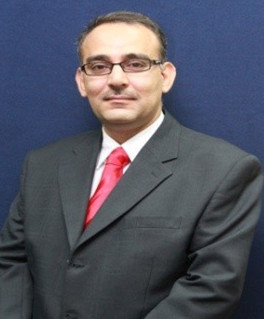Abstract—Saudi Arabia has an ambitious plan to diversify its power generation resources. Part of this plan includes launching the King Salman Renewable Energy Initiative (KSREI). The goal of this work is to study the feasibility of the first utility-scale wind farm in Saudi Arabia, known as the 400 MW Dumat Al-Jandal project, and was conducted using the System Advisor Model (SAM) software. As the hub height of the wind turbine is usually different from the height at which the wind measurements are taken, the wind speeds were extrapolated to different heights using different methods. These methods are the power law using two different shear coefficients and the logarithmic law. The simulations were performed for 113 commercial wind turbines with different sizes and power curves to help enhance our understanding of the effects of these factors on wind farm performance. The technical analysis shows that the capacity factors of the most efficient wind machine types varied from 35.5%–26.8%, 32.9%–25.5%, and 29.7%–23.7% for the heights 140 m, 110 m, and 80 m, respectively. From an economic perspective, the levelized cost of energy (LCOE) of the most efficient wind machine types varied from 3.23–4.57 ¢/kWh, 3.55–4.84 ¢/kWh, and 4.02-5.82 ¢/kWh for the heights 140 m, 110 m, and 80 m, respectively. The lowest possible LCOE (3.23 ¢/kWh), according to this analysis, is in the same range of the submitted LCOE by the project’s winning bidder. Finally, the net present value (NPV) shows that the project is economically feasible.
Index Terms—Wind energy, Saudi vision 2030, System Advisor Model (SAM), levelized cost of energy (LCOE).
Kamel Almutairi is with Chemical Engineering Department at Taibah University, Madinah, Saudi Arabia (e-mail: kmutairi@taibahu.edu.sa, almutairikamel@gmail.com).
Ramzi Alahmadi is with Industrial Engineering Department at Taibah University, Madinah, Saudi Arabia (e-mail: rlahmadi@taibahu.edu.sa).
[PDF]
Cite:Kamel Almutairi and Ramzi Alahmadi, "The Feasibility of the First Utility-Scale Wind Farm in Saudi Arabia (The 400 MW Dumat Al-Jandal Project)," Journal of Clean Energy Technologies vol. 10, no. 1, pp. 1-10, 2022.


